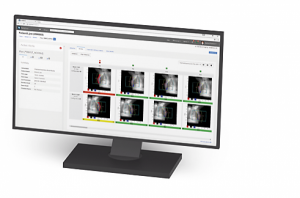Healthcare professionals are getting a clearer, more granular, look into the their patients’ cancer treatment, and more, with Adaptivo, a new patient dosimetry software created by Standard Imaging, a provider of quality assurance (QA) solutions for radiation oncology, focused on developing cutting-edge solutions for more efficient and successful treatments in the fight against cancer.
Using intensity-modulated radiotherapy and volumetric-modulated arc therapy, the software can give oncologists daily and cumulative dosage and how tumors change throughout a course of radiation treatment. Through Adaptivo, data is presented in a summary format with alerts for changes in dose that may require attention, which can help reduce the amount of over dosage or other issues that may arise during treatment.
Recent advancements in dosimetry, which helps estimate the absorption of radiation doses to individual tumors and organs and helps determine how to treat patients safely and efficiently, includes software that can deliver faster data, in addition to 2D and 3D imaging QA tests that can be analyzed and imported into one, simple workflow for healthcare professionals.
“Having the data to assess those patient changes gives confidence that you are delivering high-quality treatments,” said Shannon Holmes, staff medical physicist, Standard Imaging, in a recent interview with Physics World. “I guess there’s also the issue of having the hard data to support decision-making if you need to replan a patient – or whether, despite patient weight loss for example, your treatment plans are still robust.”
This information platform gives specialists time to analyze results of treatment with automated analysis and data input, broken down into three modules: pre-treatment, where the software compares measured results to the predicted image; In Vivo, which provides daily exit-dose monitoring to identify unforeseen changes; and Adaptive, a daily, cumulative 3D dose analysis, linking to CT images, and more for the most precise analysis.
“The problem Adaptivo addresses is the gaping hole in treatment delivery in most radiation oncology clinics,” said Holmes. “What’s missing is that day-to-day information to understand the impact of various geometric changes in the patient’s anatomy [including weight loss, tumor shrinkage] or patient positioning on the overall quality of the treatment. Put simply, are we hitting the target and are we doing it in the way we intended in the treatment plan?”























